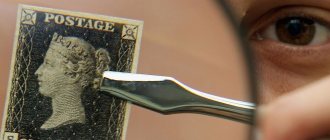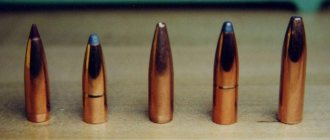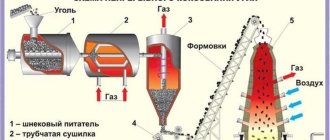First, let’s look at the concepts of “monogram” and “monogram”. Coming from the Greek words “μόνος” (“one”) and “γραμμα” (“letter”), monogram is a polysemantic concept. Sometimes it is more than one letter (for example, initials). But most often it represents the first letter of the name surrounded by decorative elements. The word “monogram” came to us from the Polish language, so its plural sounds like “monograms” and not “monograms”. Its difference from a monogram is that the letter itself becomes a decorative element or artistic pattern. It is interesting that the French use the word “cipher” as the concept of “monogram,” which implies the encoding of the name in the pattern. Later we will see that a monogram can be assembled from monograms.
The use of monograms on coins goes back a long way. For example, we took the ancient Greek coin of the city of Patras. The city was part of the Achaean League, and it is the monogram of this union in the form of capital letters “A” (alpha) and “X” (chi) that is present on the reverse.
Monograms and monograms on coins of Peter I
Having visited Europe and borrowed many achievements from there for the progressive development of Russia, Peter I, among other things, adopted the European fashion for monograms and monograms. In Europe, the ornately encrypted name of the ruler has long migrated from seals to coins. And by that time, invited Western medalists were working at the Russian mints, teaching Russian masters how to cut stamps and gradually passing on European standards to them.
For the first time we will see the monogram of Peter the Great on the ruble of 1722 with a special portrait. On its reverse, four letters “P” intertwine with each other to form a cross. At the foot of each there is an imperial crown minted. Four Roman units – “I” – lay diagonally between the crossbars of the cross. However, the first impression may be wrong. If you look closely, each "I" has a small dot. Therefore, the meaning of the monogram can be deciphered not only as “Peter the Great”, but also as “Emperor Peter” (the word “emperor” then began with the letter “i”).
Let's look at the evolution of the monogram on the ruble of a later issue. In three years she has improved significantly. The verticals of previously primitive letters are now thicker and have jagged extensions at the ends. The dots over the “i” are made in the form of cubes. A radiant circle appeared in the center of the weave (because of it, this type of ruble is called “solar”).
What about the monogram? It turns out that it could have appeared on Peter’s coins before the monogram. On the left and in the center are the monogram sides of the 1719 proof pennies. Let's look at the one in the center. Here three letters of the Latin alphabet are intertwined: “C” is given in the meaning of “caesar” (“emperor”), “P” means the name “Peter”, and “A” (“Alekseevich”) indicates the patronymic. It seems that there is no “R” here. But a trial portrait half-shelf from 1721 comes to the rescue. Here the two curly Latin “Ps” are already quite distinguishable, but we must remember that their rounded part is also a “C” (“caesar”). Peter himself used this type of monogram most often. Sometimes this double "P" is interpreted as "Peter Primus", but this decoding is controversial. The monogram, which later passed to Peter II and Peter III, was also considered an artistic interpretation of two palm trees (we talked in detail about the symbolism of the palm tree in the article “Plants on Russian Coins”).
What is the difference between a monogram and a monogram?
Considering the question of what a monogram is, let’s compare it with a monogram. The main differences are:
- Various numbers of patterns and weaves. That is, a monogram is a more complex image than a monogram. The form of the latter is somewhat stricter.
- A monogram can belong to several persons, while a monogram can belong to only one. In the first case it will be a complex monogram, in the second - a simple one.
- The monogram includes not only patterns, ligature, but also heraldic symbols, such as a crown, wreath, lion (other animals). That is, in addition to the letters of the first and last name, it also carries additional information. Whereas a monogram is just initials, although perhaps beautifully intertwined.
- It is much easier to reproduce a monogram; it can be displayed, for example, using a pen, while a monogram may require other means.
Monograms of Catherine I on coins and copper plates
During the reign of Catherine I, the State Emblem - a double-headed eagle - was again minted on large silver instead of a monogram. But with due diligence, we will find monograms with her money.
The most ornate monogram was developed for minting copper square plates produced in Yekaterinburg. It seems that it is impossible to make out anything in this interweaving. But, if you look closely, you will notice that the Latin letters “I” and “E” (“Empress Catherine”) are used. Both letters are not only intertwined, but also mirrored. Such a monogram was sometimes minted on the chest of an eagle (corner stamps of the board).
A simpler monogram in the form of a single “E” topped with a crown appears on a proof penny from 1727 (at that time a penny was an analogue of a two-kopeck coin). However, it never came to the point of mass coinage. Of the copper coins at that time, only the lightweight “cross” nickel was minted, whose design, developed under Peter I, did not change until the end of its issue.
The most mysterious monogram of Catherine I is considered to be minted on a trial copper ten-kopeck coin of 1726. Here are the already familiar “I” and “E” in a mirror image. However, an additional element has been added to the picture in the form of the Greek letter “gamma”, which, when intersecting with the others, brings the letter “M” to the fore. Therefore, in numismatic literature this coin is called the “Menshikov Dime”, justifying that almost exactly the same “M” adorned the lattice of Menshikov’s mansion. The position of Menshikov, who practically ruled the state at that time, made it quite possible to immortalize his name on money in a similar way. But, again, they did not launch mass minting of this coin.
Top class monograms
By the turn of the 19th and 20th centuries, the craft of engraving had reached maturity both in terms of the complexity and interweaving of the image, and in terms of manufacturing techniques.
Below are three examples of watches from the Swiss company Patek Philippe with high-quality monograms: neat integration of the monogram into the guilloche carving on the lid, colored thin-walled hot enamel, and an applied volumetric gold monogram with the circumference of the volume of the lid. The Art Deco era significantly influenced the image formed by the monogram, and since the 1920s you can find a variety of laconic geometric solutions and unexpected spellings of initials.
In products after the 2nd half of the 20th century, a further simplification of the visual qualities of monograms can be seen, most often reduced to a pair of letters of a formal font without decoration. Nevertheless, there are absolutely wonderful intricate combinations of letters, those rare cases when the engraver approached the matter not only with his hands, but also with his soul.
Monograms and monograms on coins of Peter II
The ruble of Peter II shows us the already familiar monogram in the form of a cross of intertwined “Ps”. Only the number of “i”s was doubled, and the curly ends of the verticals were slightly changed: the teeth of the letter “i” were removed, and those of the “P” were replaced with a rounded element.
The story with monograms is much more interesting. On the test penny, the curls of the “P” at the bottom and top intertwine the rounded ends of the letter “A”, in which the role of a horizontal stick is played by a partial reflection of its top. The Roman numeral “II” is minted at the bottom of the coin field.
And on the obverse of the trial frame half, the monogram is a direct copy of the monogram of Peter the Great, under which the Roman two was placed. Unfortunately for numismatists, not a penny or a half coin decorated with monograms went into mass circulation.
What dictionaries say
According to dictionary definitions, there are the following meanings of the word “monogram”:
- A drawing that looks like intertwining lines.
- Image of the first letters of various names: organizations, educational institutions on documentation, uniforms, logos.
- Patterned interlacing of the initial letters of the first and last names.
The word “monogram” came to us from Polish, where it means “knot”, and there it, in turn, was formed from the Proto-Slavic “knit”. Dictionaries give the following options as synonyms for the word “monogram”: monogram, sign, emblem, cipher.
There is a humorous expression “writes monograms,” which can refer both to a drunk person whose legs get tangled when walking, and to someone who expresses himself too abstrusely and pretentiously.
The stress in the word "monogram" is on the first syllable, whereas in the plural it is on the last.
Trial monogram coins of Anna Ioannovna
In 1740, a new line of coins was developed for the empress, which included monogram 5 kopecks, known to numismatists only from a new-made copy in copper. Unlike the heavy test portrait nickels (20.48 grams), this is a small (16.5 mm) and light (2.59 - 2.65 grams) coin.
Five years earlier, Anna Ioannovna’s monogram appeared on a test penny. On both coins it is assembled from two “I”, mirroring each other, on which a single “A” is superimposed. Since the “I” is double here, the monogram can be deciphered both as “Empress Anna” and “Empress Anna Ioannovna”.
Monogram ruble 1740
The monogram ruble of Ivan Antonovich of 1740 was also destined to remain a trial one. According to the tradition of those years, the obverse of coins of large denominations should be decorated with a portrait of the ruler. The problem was that Ivan Antonovich was born on August 12 (23), 1740, and on October 17 (28) he already took the title “Emperor and Autocrat of All Russia.” The coin office was puzzled by how to depict the baby on the obverse, and as a temporary solution proposed minting a monogram instead of a portrait. The mirrored “I” on it, like Anna’s, allows it to be read both as “John the Third” and as “Emperor John the Third.” But the project was rejected, and Ivan Antonovich himself appeared on the obverse, although he was several years older than his actual age.
Elizabethan monograms on coins of Russia and Prussia
A wide variety of monograms are present on the coins of Elizabeth Petrovna. It was under her that monograms moved from single test copies to mass-produced coins. Collectors are most familiar with the monogram on copper from 1757-1762. It is created by the letters “I” and “E” in direct and mirror images, intertwined with each other.
Perhaps we will see the most exquisite version of the monogram on the half-ruble from the “for palace use” series. Here “I” and “E” are struck in a single design. But each of them is woven from many smallest decorative elements, representing a real work of art.
The simplest version of the monogram was chosen when minting coins for Prussia. True, there this monogram adorns only the smallest denomination - solid. On larger denominations, the obverse is occupied by either the State Emblem or a portrait of the Empress.
The coin office did not know whether there would be any other empresses named Elizabeth in Russian history. Therefore, when developing the test kopecks of 1755, the engravers added a second “I” to the pair of letters already known to us, but in the role of a unit.
A little history
Data from archaeological excavations suggest that even in Ancient Egypt, seals with carved monograms were used. Then similar symbols, namely the initial letters of names, began to be used in Greece and Rome. It is documented that monograms were used there already in the 4th century BC. e. One of the most famous of them is the “Christogram” - XP “Chi-Rho”, which includes the first letters of the Greek spelling of the name of Jesus Christ. Around this time, many Roman and Greek city-states introduced monograms on their coins.
Since about the 7th century, representatives of the highest clergy and rulers of various principalities and countries have used similar symbols on personal seals, which they used to certify documents and letters instead of signatures. Medieval aristocrats and rich people, to please their own vanity, decorated jewelry, cigarette cases and boxes, wine vessels and cutlery. In addition, monograms were made on the linen of aristocrats and kings, the embroidery of which was complemented by various crowns corresponding to the title of the owner: royal, baronial, count or noble. At the same time, there were special rules regarding what color the crown of a particular class could be embroidered. Thus, a crown embroidered on baronial linen could be two-colored, but one embroidered on noble linen could only be white.
In medieval Europe, craftsmen, artists and engravers stamped monograms on their products. These were not always letters, like Leonardo da Vinci or Dürer. Quite often, artists marked their canvases with a figure, placing it in a secluded place in the picture. So, for example, B. Garofalo painted a carnation flower, L. Cranach - a winged snake, P. Bril - glasses.
Since the 16th century, a monogram has been not only a personal symbol of rulers and aristocrats, but also a corporate trademark that was affixed by craftsmen.
Monograms and monograms on coins of Peter III
When Peter III ascended the throne, the Russian medalists responsible for issuing money followed the beaten path. As a test ruble, a coin was minted, the reverse of which was decorated with the same Peter the Great’s cross-shaped monogram, but with a triple “i”. However, the same double-headed eagle was left on the circulation coins.
On the trial silver nickels, they did not copy the monogram of Peter I, tripling the “I”. In the version on the left, the monogram is formed by two Latin letters “P” (“Peter”) and “F” (“Fedorovich”). In the version in the center, instead of the middle name, the number “3” was used. The format of the letter “P” here is already noticeably different from the designs of Peter the Great.
Male or female monogram?
There was no hard and fast rule regarding the identity of a monogram, but they could be determined according to some tradition of style:
- men's monogram - two letters, first and last name
- lady's monogram - one letter of the name with many curls in an intricate frame
- children's monogram - one easy-to-read letter in a simple frame
- wedding (family) monogram - two letters of the newlyweds’ names, sometimes a large third letter of the surname is woven between them
Pocket watch Pavel Bure with the monogram “EK” on the cover, 1885. Presumably, a monogram for a wedding - the intertwined letters E and K are made in deliberately different fonts (bride and groom).
Eterna / Schild Freres ladies' corset watch with silver applied monogram "MG", Switzerland, 1900s
Monograms and monograms on coins of Catherine II
The most interesting was the monogram designed for the denomination “pair - 3 money”, which was minted for Moldova and Wallachia. In the center of the cross-shaped composition is the number “II”. The crossbars of the cross are formed by four monograms, where the letter “E” is intertwined with its mirror image. True, the monogram can only be found on rare coins from 1771.
In most cases, the monogram of Catherine II is similar in appearance to the monograms of her predecessors. The most common is the monogram on copper coins of the 16-ruble foot (1763-1796). The letter "I" is intertwined with the letter "E", in the central loop of which the Roman numeral "II" is placed.
We will see a single “E” with a high number “II” on the “Siberian” coins of Catherine. The copper coins of 1996, issued in the 32-ruble foot, are made in the same style (they are called “monogram”). Of these, the trial version with additional decorations of the letter “E” looks the most beautiful.
The monogram on the gold half coins (coins “for palace use”) is made up of two letters. If the letter “E” denotes the name of the empress, then “A” indicates her adopted patronymic - “Alekseevna”. Remember the shape of this letter “A”. We will meet again many times.
Living room with classic curls
Wallpaper with a monogram pattern is one of the most interesting ways to create a festive atmosphere in the living room. This design will be perceived as bright, sophisticated and aristocratic, so it will not cause negative emotions, even if you decide to decorate all the walls in your interior with monograms.
However, most often wallpaper with monograms is used exclusively to create accents in the living room. To create a stylish accent in your room, decide on the shades of the patterns, choose the right place for gluing, and also think about how to decorate the rest of the living room walls.
Tip : wallpaper with monograms in the living room interior looks great in the fireplace area: you can highlight this surface by combining monograms with plain wall coverings.
Wallpaper with large monograms and classic patterns is best used only in one place in the room: it is advisable that such a wall is not overloaded with furniture or accessories . Even paintings that match a given style will spoil the interior if you hang them against the background of wallpaper with large patterned images.
Bright wallpaper with monograms requires good lighting , even in the evening, so the balcony area or the wall opposite the window will not always be successful for such decoration.
Better consider the possibility of using additional lighting , for example, in an area with a sofa: in this case, you will not only emphasize the design, but also make this area more comfortable.
Antique living rooms with “royal” furniture, gilded accessories and other features of classic design can be made even more harmonious if you paste small drawings of monogram scenes on a light, monochromatic wall background. You can create this effect yourself by choosing stylish wallpaper, as well as frames or moldings of a suitable shape.
Monograms and monograms on coins of Paul I
Initially, a complex monogram was developed for Paul, in the center of which the coat of arms of the Russian Empire outlined in a circle was placed. This option is used on the proof rubles of 1796 and on one of the “efimka” variants (the proof coin of 1798, worth one and a half rubles).
For the mass minting of large denominations (half-fifty, half-ruble and ruble), the monogram was simplified by removing the coat of arms and moving it to, which is why it turned into a silver cross, similar to the central element of the Order of Malta. This should not be surprising, since from November 29, 1798 until his death, Paul served as its Grand Master. A similar cross is also present on Paul’s coronation token (we will see it later).
Paul's monogram in the form of a single curly letter "P" with the number "I" was minted on the obverse of the junior group of denominations made of copper (polushka, denga, kopeck and 2 kopecks) and silver (5 and 10 kopecks).
How to read a complex monogram
The correct monogram is seen not as a set of letters, but as a complete graphic work. And yet, from the moment the monogram is deciphered by sight and consciousness into its constituent elements, it should be read and remembered without difficulty.
A regular monogram contains two letters, they are read from left to right. Two letters from left to right are the most traditional version of a monogram. However, most often the jewelry artist tried to entertain and confuse the viewer.
Retouret Geneve pocket watch with jewelry “ladies’” monogram “BE”, Switzerland, 1880s
If it was necessary to hide more than 2 symbols in a monogram, then either the letters were placed in a row or superimposed on each other (such monograms were called Cipher, French Cypher).
To decipher a complex monogram, you need to imagine it as a three-dimensional image in which the first letter is in the foreground, followed by the second letter, and the third letter in the background.
Monograms of Alexander I on coins
The design of the mass minted coins of Alexander I is quite laconic in comparison with its predecessors: no portraits, no monograms, no monograms. Although the options for portrait test rubles are well known to numismatists. Appeared on trial versions of lower denominations and monograms. The simplest of them can be seen on the imprint of the “ring” nickel.
The most complex monogram was minted on the test 2 kopecks of 1802, known exclusively in the new-made version. Here, in addition to many decorative elements, the design of the horizontal stick “A”, presented in the form of a palm branch, is interesting.
In a simpler version, it is present on the proof penny of 1810. A palm branch paired with a laurel branch was an indispensable attribute of the design of copper coins of the second half of the 18th century. In the 19th century, the laurel will remain in its original place, and the palm branch will be replaced by an oak branch. Perhaps the medalist wanted to keep it, at least inscribing it in the imperial monogram.
Venusel coins of Nicholas I
The monogram returns to coins during the reign of Nicholas I. This first happens in 1839, when the silver standard is introduced in Russia (the era of silver monometallism). This option is quite simple in execution, but the curls give it grace. It was used on coins from a quarter of a penny to 3 kopecks inclusive.
In 1849, the design of the coins was changed. The monogram on the lower denominations from half a penny to a penny also changes. The outlines of the letter “H” have become more strict, but it is all assembled from decorative elements, each of which is attractive with many small artistic details.
Methods of applying monograms
Monogram can be applied in various ways to organza.
Organza embroidery
Classic, not outdated over the years, application of a pattern to organza. Embroidery machines using programmed embroidery work for years to produce the classic organza monogram . I often hear arguments from buyers about the obsolescence of this type of organza, but it nevertheless does not lose its position, does not become obsolete, is imported to Russia in huge quantities, remaining beloved and unchanged in the preferences of many residents not only of our country, but also of many other countries . I saw how a new embroidery pattern was born in a small Turkish manufacturing enterprise. The artist-designer manually draws the sketch, introducing the spirit of modernity, mixing it with the classics of the genre. Such a design is discussed by the entire team, and then, after adjustments, it is processed in computer programs and only then implemented into production.
Organza monogram
Organza print
A modern version of the image of monograms is printing on organza. This look is achieved in different ways. You can read about them here .
Organza monogram
Monograms of Alexander II on Russian coins
The future Emperor Alexander II first saw his monogram on a coin minted in honor of his marriage (the “wedding” ruble of 1841), where “A” is intertwined with “M” - the first letter of the name of Maximiliana Wilhelmina Augusta Sophia Maria of Hesse-Darmstadt, after the adoption of Russian citizenship of who became Maria Alexandrovna.
The same “A” appears on the line of junior denominations from half a penny to a penny, starting from the beginning of his reign. There is no longer any talk about the palm branch. The monogram is an almost exact copy of the letter “A” from the reverse of the gold half coin of Catherine II, discussed above.
In 1867, Russian coins radically changed their design, which would remain until the collapse of the empire. Now the monogram will be minted only on coins in denominations of ¼ and ½ kopecks. The execution of “A” on them is close to the Old Church Slavonic font. On coins minted for Finland, the same ornate version of the monogram remains.
Monograms of Nicholas II on coins of Russia and Finland
When the last Emperor of Russia ascended the throne, the design of the coins remains the same, but the monogram has to be changed to ¼ and ½ kopecks, which was done in 1894. It should be noted that for these two denominations the design of the monogram differs in small details. On the 1895 half penny, the engraver mistakenly reproduced both versions. They are distinguished mainly by their upper curls. For a quarter of a penny, they depict three leaf-shaped elements, and for a half of a penny there are already four of them.
The imperial monogram on Finnish coins is very elegant. In 1917, after the abdication of Nicholas II, the Helsingfors Mint had to urgently think about changing the obverse design. They decided, as with the higher denominations, to mint the Russian eagle, but without the crowns.
Russian style
As for pre-revolutionary Russian monograms, most often they were made according to patterns from the catalog in the spirit of the European tradition of their time. Below is a typical monogram from the catalogue, hand-carved with a gravel pen on the smooth cover of a pocket watch.
Ladies' stone watch Pavel Bure with engraved monogram “VK”, 1907. Custom engraving with gravel, imitation of volume and shading of halftones.
Princely and royal monograms are well described in the literature and are not inferior in level to Swiss examples. However, more often in life there are simpler examples.
Russian pocket watch with engraving for a graduate of the Vladimir Military School, 1900s. Simple engraving with a graver on the monogram shield.
After the Revolution of 1917 and the NEP period, the monogram on objects began to be considered a relic of the noble past, and practically went out of circulation in the Russian-speaking space. At best, you can find a couple of letters engraved in a random impulse without artistic encryption.
However, there is always an exception - and here we see the “veteran” Pobeda 1955 watch with famously encrypted curls of initials on the cover. The engraver's skill level is clearly far from the old models, but the desire to imitate overcomes all obstacles. To be honest, I still don’t understand what these letters are, maybe it’s the national alphabet, Georgian or Armenian?










